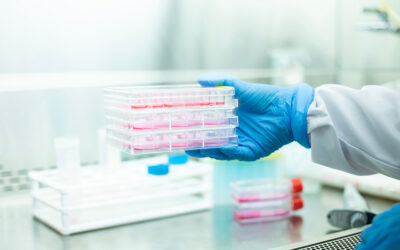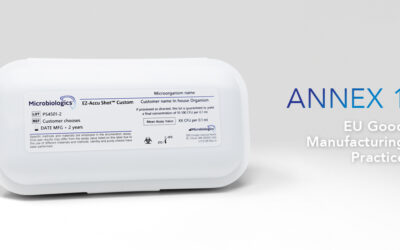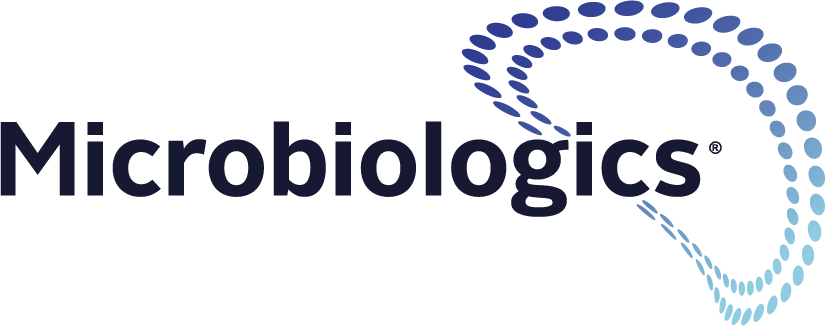Since we launched our Custom Solutions program for environmental isolates and objectionable organisms in 2011, the most common strains have remained remarkably consistent. Even as the customers we serve (and the products they manufacture) have become increasingly diversified, the top non-compendial objectionable organisms have been steady.
For microbiologists performing environmental monitoring, the commonality of these objectionable organisms is important for two key reasons: (1) these strains are endemic to various kinds of work environments because they flourish on human skin, in water supplies, or other ubiquitous habitats, (2) contamination with these organisms may indicate other problems, such as improper gowning techniques. Some of them, like Bcc, pose unique challenges for detection and management. In the USA, almost 75% of pharmaceutical and personal care product recalls result from objectionable organisms. Of these recalls, the majority result from a small number of strains, several of which are identified below.
In this list of the Top 10 Requested Strains for environmental isolates and objectionable organisms, we will highlight unique characteristics that make these organisms continuously challenging for microbiologists around the world.
Top Ten Custom Strains
1. Micrococcus luteus
Although it is typically harmless, Micrococcus luteus also exhibits opportunistic pathogenicity, causing catheter infections, meningitis, septic arthritis, pneumonia, and other infections. Commonly associated with human skin, particularly the arms, legs, and head, this objectionable organism may indicate improper aseptic techniques or gowning practices. It flourishes at temperatures ranging from 25° to 37° C, highly suited for habitats in direct contact or close proximity to human skin, such as PPE.
2. Staphylococcus epidermidis
Commonly found on human skin and moist tissues, such as mucosae and nares, Staphylococcus epidermidis is an opportunistic pathogen frequently associated with hospital-acquired-infections (HAI). It poses particular risks for patients with immunosuppression or medical devices like catheters. Because of its association with the mouth and nose, its presence may coincide with other more dangerous pathogens, if detected in your environmental monitoring program.
3. Bacillus cereus
B. cereus is a rod-shaped, gram-positive, motile, and endospore-forming bacterium found in diverse habitats throughout the world: soil, fresh and marine waters, spices, food, paper, and even sheep fleece. In spore form, it can survive exposure to disinfectants, heat, desiccation, and radiation. Among the common objectionable organisms on this list, B. cereus stands out for disparate means of introduction to work environments. B. cereus may enter a pharmaceutical production area through the air supply, water supply, employee clothing, dust, packaging, and raw materials, such as dry powders. Spores may be present in cracked or scuffed surfaces. Related to Bacillus anthracis, the causative agent of anthrax in cattle and sheep, B. cereus can cause serious infections, including septicemia and pneumonia in immunosuppressed patients and neonates, as well as less serious infections like food poisoning.
4. Ralstonia pickettii
Small enough to pass through traditional 0.2-µm sterilizing-grade filters (0.5-0.6 X 1.5-3.0 µm), Ralstonia pickettii poses specific risks for aqueous products, including saline, skin cleansing solutions, and intravenous medications, as well as products involving purified water in their manufacturing processes. In addition to its diminutive size, Ralstonia pickettii forms biofilms in water pipes, making it a concern for hospital, dental, municipal, and industrial water supplies.
5. Bacillus licheniformis
Related to Bacillus cereus (number 3 on this list), B. licheniformis has been associated with secondary and mixed infections in immunocompromised patients. It is common to soil and can survive harsh conditions in dormant spore form. It is commonly cultured to derive protease for use in the production of biological laundry detergent.
6. Penicillium rubens
Penicillium rubens is the species of fungus first used to produce the naturally occurring antibiotic that bears its name. This species remains the principal producer of penicillin almost 100 years after its discovery. As a producer of penicillin, this organism is of particular concern for products that may cause reactions in patients who are allergic to this antibiotic. Requiring less moisture than other indoor molds, this fungus is common to water-damaged gypsum drywall, a frequent source for this contaminant.
7. Corynebacterium tuberculostearicum
Several species of Corynebacterium spp. are common to normal skin flora but may cause serious infections in immunocompromised patients. Its presence in clean rooms may indicate improper aseptic and gowning practices.
8. Penicillium chrysogenum
Like the closely related Penicillium rubens (number 6 on this list), P. chrysogenum is frequently associated with water-damaged buildings. Its spores are a common allergen.
9. Bacillus thuringiensis
Endemic to soil, this gram-positive bacterium produces proteins (proteinaceous inclusions called Delta endotoxins) with insecticidal properties for various insects in larval form. Though it is commonly used as a biological pesticide, its proteins have no known adverse effects on humans or other vertebrates. B. thuringiensis is so similar genetically and phenotypically to B. cereus (number 3 on this list) that many microbiologists have considered them a single species, differing primarily in the production of endotoxins, which are controlled by plasmid genes and therefore susceptible to transmission and loss. Able to thrive in alkaline environments, B. thuringiensis has been associated with recalls of contaminated sterile products.
10. Burkholderia multivorans
Comprised of at least 17 species, including B. multivorans and B. cenocepacia, Burkholderia cepacia complex (Bcc) is a notorious contaminant that can be both difficult to detect and to eradicate. If the organism becomes stressed (if it is in chilled pharmaceutical water, for example), it may be difficult to recover, yet it may also be challenging to eliminate from water supplies because of its ability to form biofilms with mucin-binding proteins. Bcc is resistant to several common antibiotic materials. Because of its ability to thrive in water supplies, it is a common cause of infections and recalls related to non-sterile aqueous products, such as mouthwashes and skin creams. Typically posing little risk to healthy children and adults, B. cepacia complex can cause severe infections in patients who are elderly, immunocompromised, or otherwise vulnerable.
Custom Solutions
If you detect any of the above objectionable organisms, you are not alone! Microbiologists are often surprised to discover that their environmental monitoring practices uncover the same contaminates as their peers around the world. Our ever-growing list of Custom Environmental Isolate Controls (PDF) demonstrates the broad range of objectionable organisms included in environmental monitoring programs. Our Custom Solutions team works with pharmaceutical and personal care manufacturers around the world to manufacture controls from their isolates. If you need custom controls made from your isolates or from culture collection strains (PDF), contact our Custom Solutions team to learn more.
Sources
Barlasov, J., Sutton, S., Jakober, R. “Recovery of Stressed (Acclimated) Burkholderia cepacia Complex Organisms.” American Pharmaceutical Review. 2014.
Bekker, M., Huinink, H. P., Adan, O. C. G., Samson, R. A., Wyatt, T., Dijksterhuis, J. “Production of an Extracellular Matrix as an Isotropic Growth Phase of Penicillium rubens on Gypsum.” AEM. American Society of Microbiology. Volume 78. October 2012. p. 6930 – 6937.
Busse, H-J. (2012). Genus I. Ralstonnia. Bergey’s Manual of Systematic Bacteriology (2nd ed., Vol. 5, pp. 571-577). New York: Springer.
Cherif, A., Ettoumi, B., Raddadi, N., Daffonchio, D., Boudabous, A. “Genomic diversity and relationship of Bacillus thuringiensis and Bacillus cereus by multi-REP-PCR fingerprinting.” Canadian Journal of Microbiology. 2007. Volume 53. p. 343-350.
Otto, M. “Staphylococcus epidermidis – the “accidental” pathogen.” Nat Rev Microbiol. Aug: 7(8): 555-567.
Sandle, T. “The Risk of Bacillus cereus to Pharmaceutical Manufacturing.” American Pharmaceutical Review. 2014.
Schleifer, K.H., Bell, J. Family VIII fam. nov. Genus I. Staphylococcus. Bergey’s Manual of Systematic Bacteriology (2nd ed., Vol. 3, pp. 392-421). New York: Springer.
Sutton S, Jiminez L. “A review of reported recalls involving microbiological control 2004-2011 with emphasis on FDA considerations of “objectionable organisms’.” American Pharmaceutical Review. 01 January 2012.






0 Comments